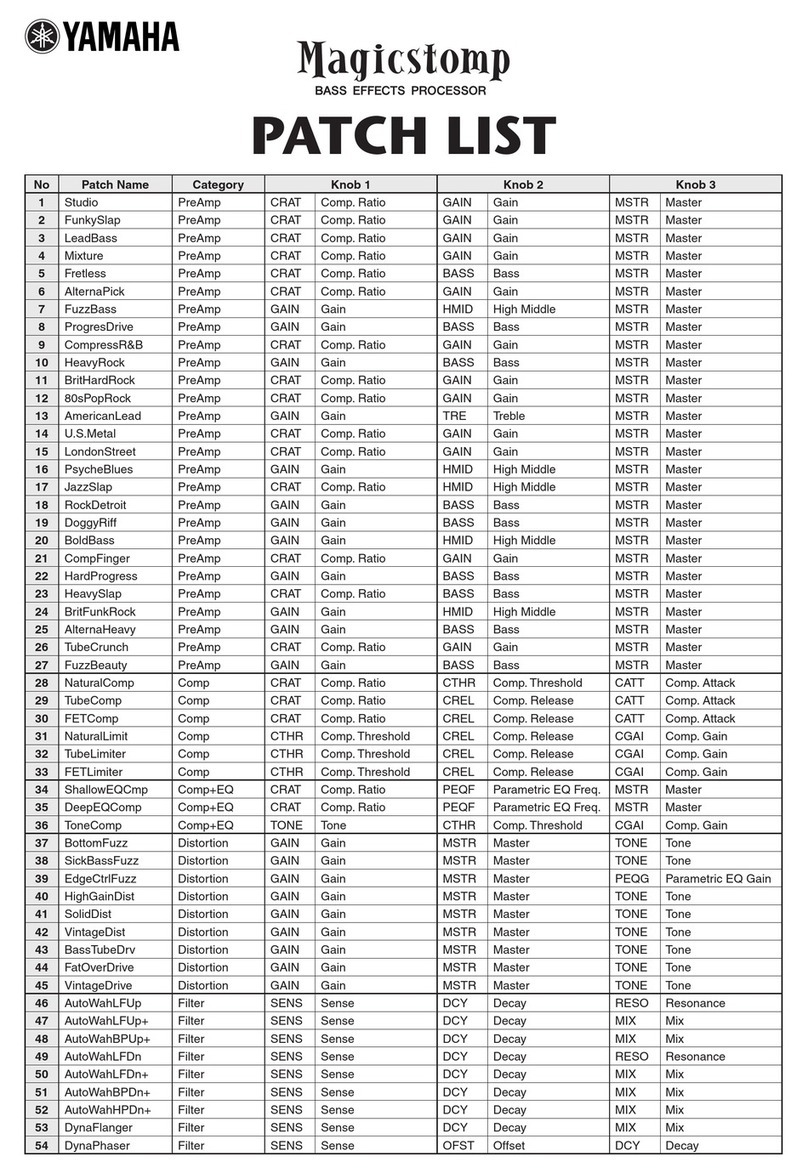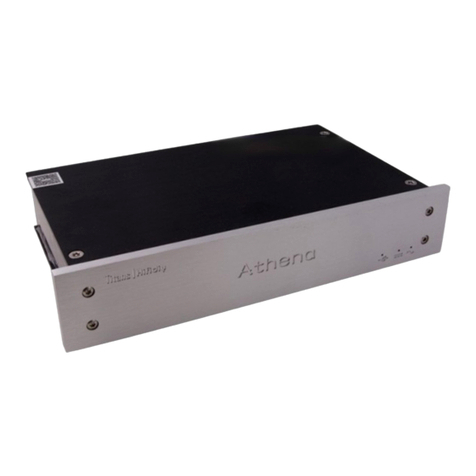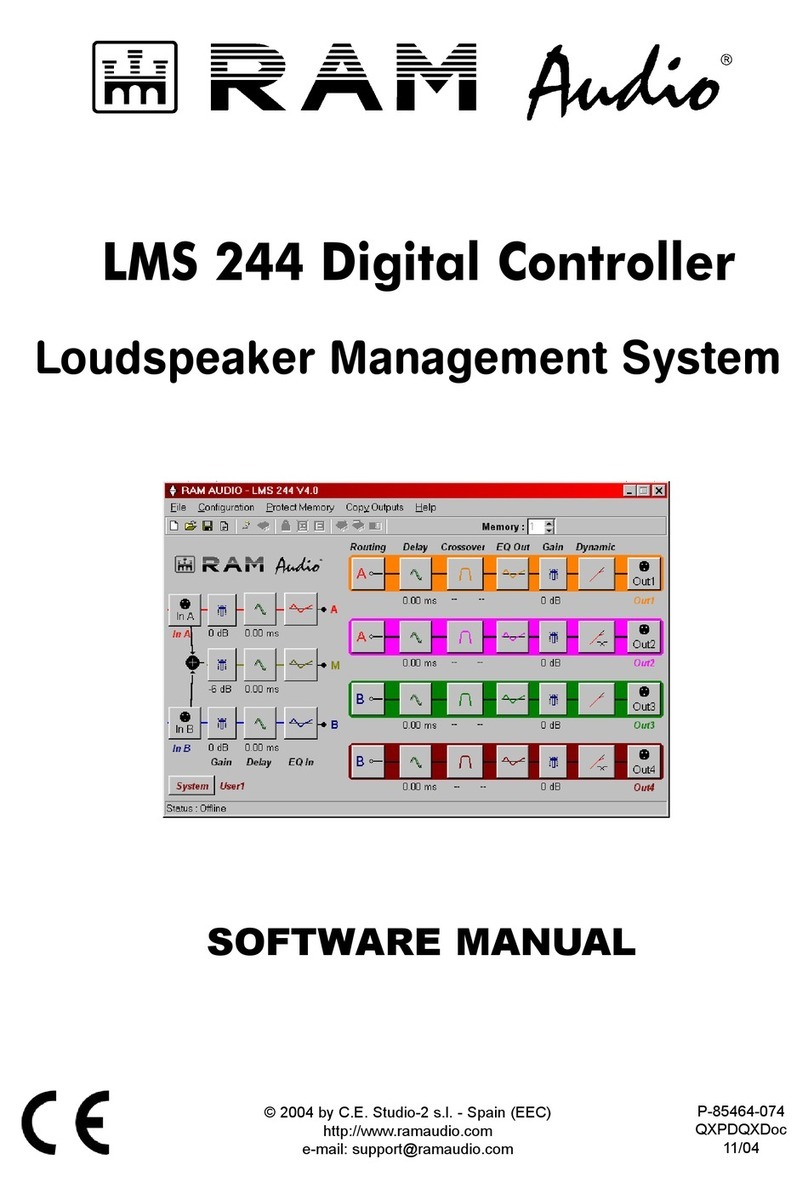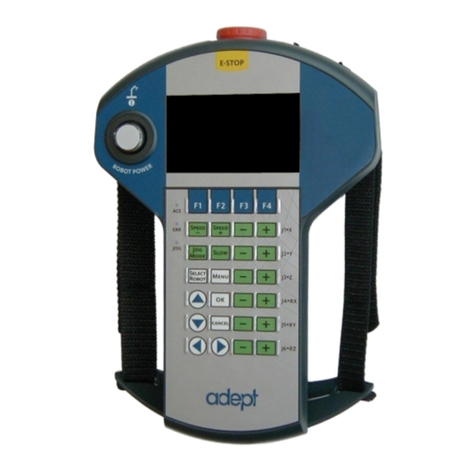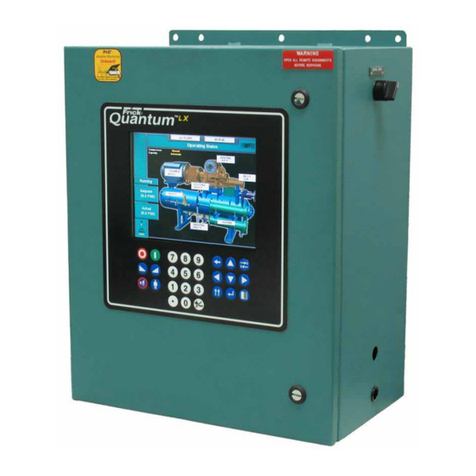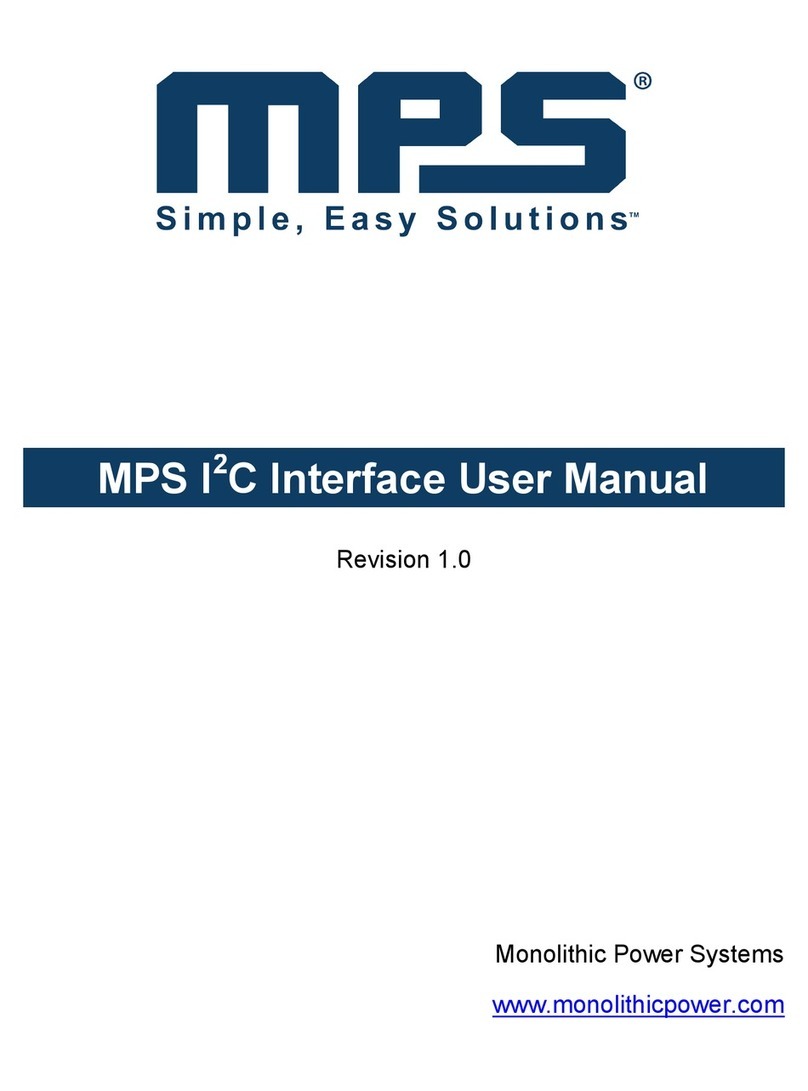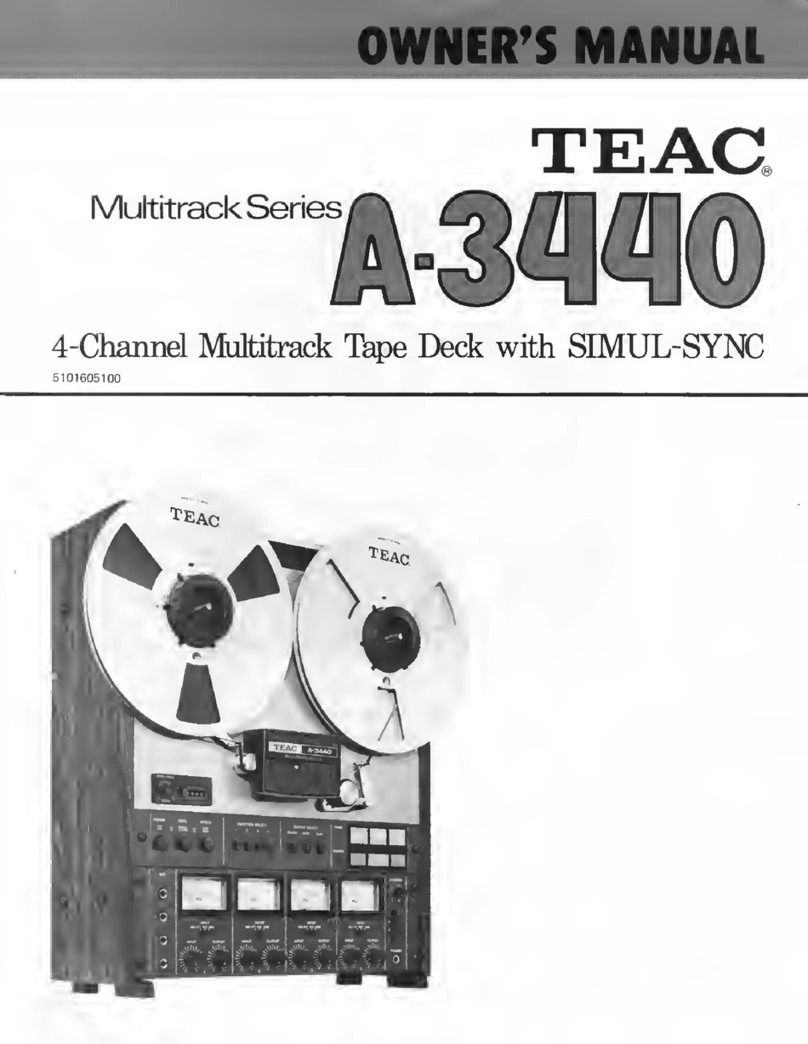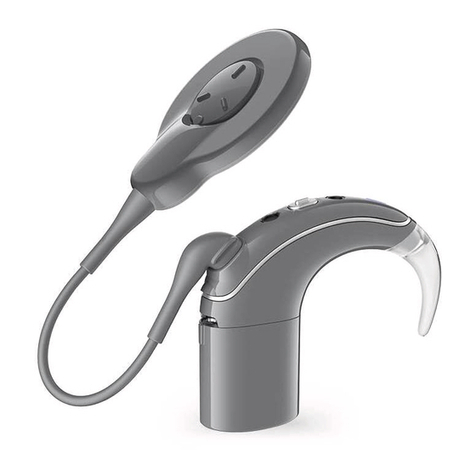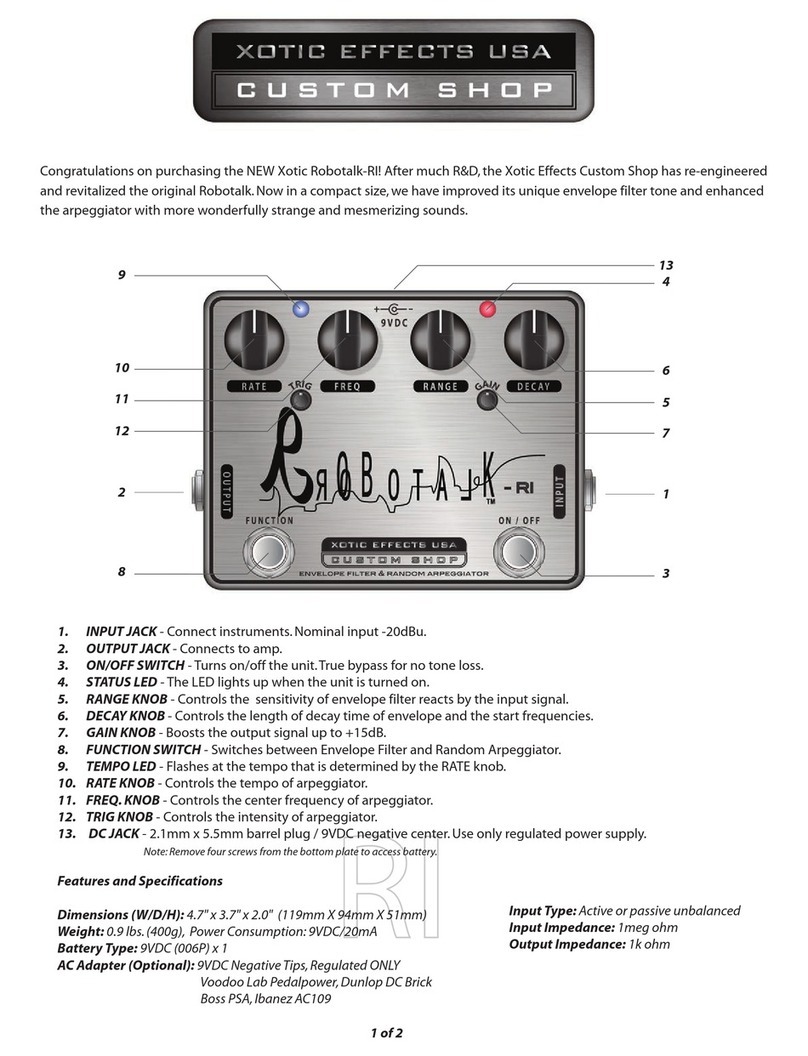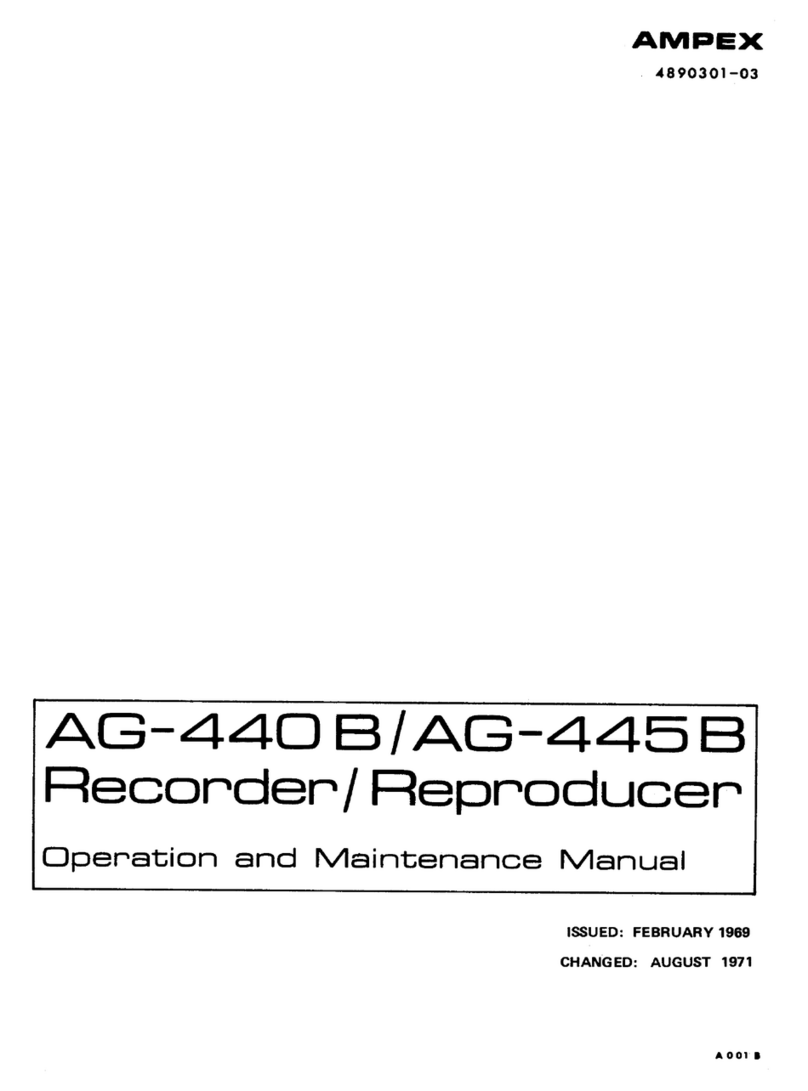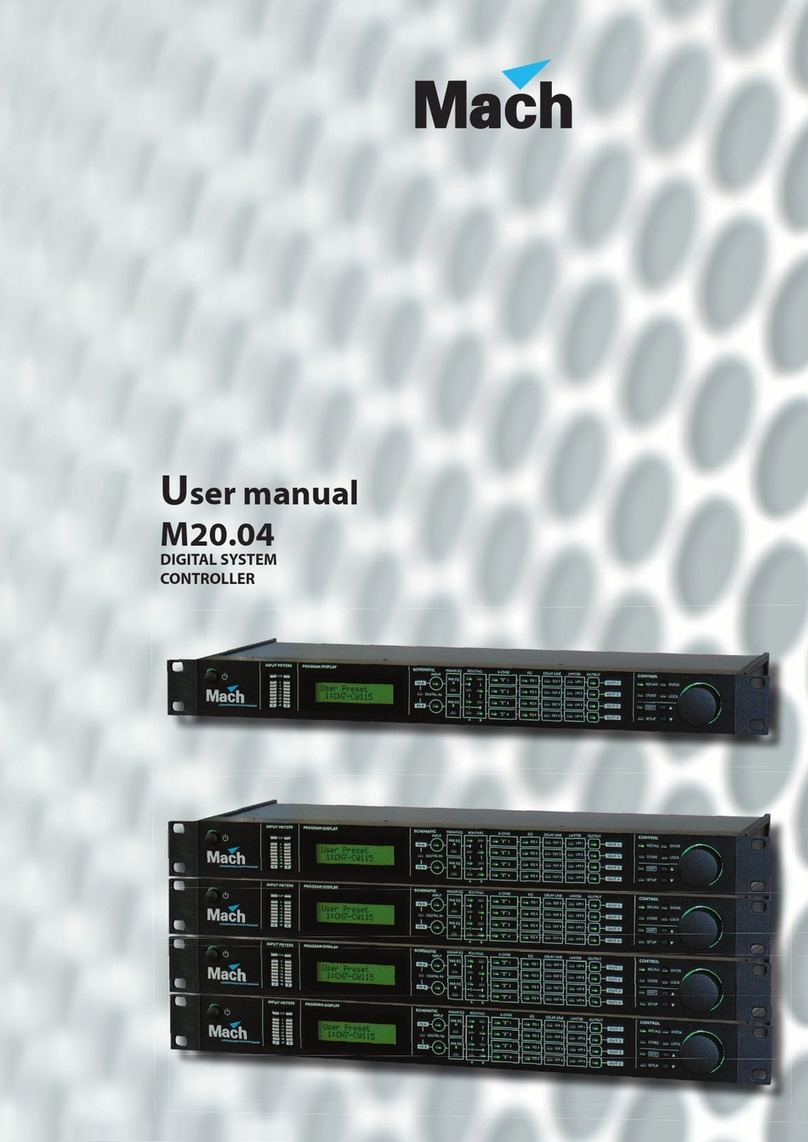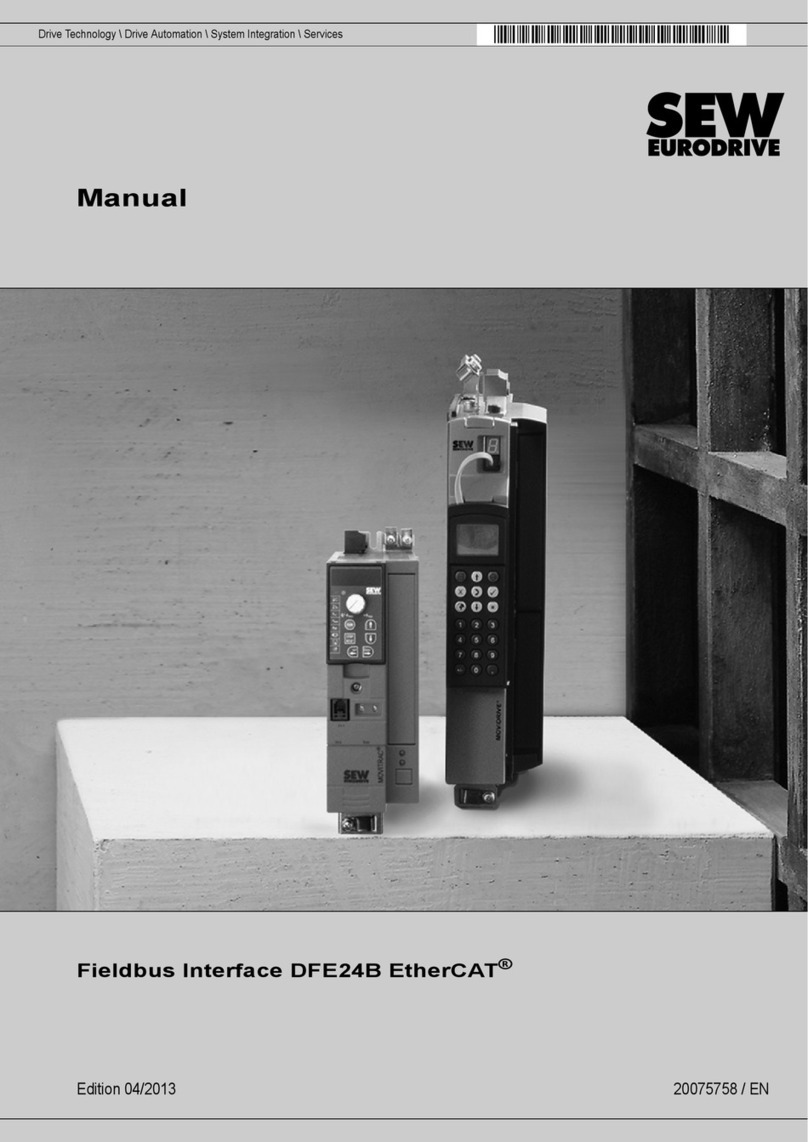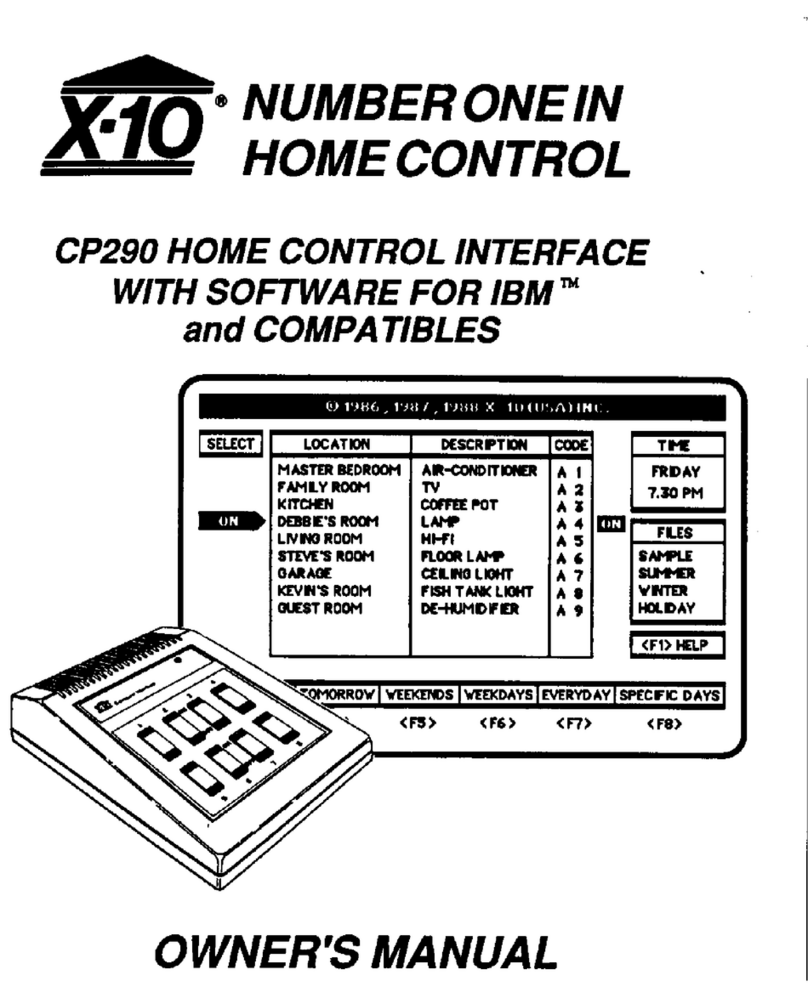IMST iOKE868 LoRaWAN User manual

IMST GmbH
Carl-Friedrich-Gauß-Str. 2-4, D-47475 Kamp-Lintfort
iOKE868 LoRaWAN®
User Manual
Version 1.0
Document State
initial
Date
October 2020
Document ID
4000/40140/160
© 2020 IMST GmbH - All rights reserved

iOKE868 LoRaWAN® / / User Manual Version: 1.0 Page 3 of 12
General User Information
The content must not be published, duplicated or passed to third parties without our express permission. Read this documentation carefully
before initial operation or use of the kit iOKE868 with integrated LoRaWAN technology.
®
Observe the safety instructions and warnings in this documentation.
Keep the user manual for future reference.
General Notes
Product Information
Kit name: iOKE868 LoRaWAN®
Kit content:
iO881A for LoRaWAN®
Antenna
Micro-USB cable
Order Number: 404620
Manufacturer:
IMST GmbH
Carl-Friedrich-Gauss-Str. 2-4, 47475 Kamp-Lintfort, Germany
Disposal of the Device
Do not dispose this product at the end of its life in the household
waste, but in the designated places for recycling old electrical
equipment.
Do not dispose the battery cell in the household waste, but in the
designated areas for recycling old batteries.
Disclaimer
IMST GmbH points out that all information in this document are given on an “as is” basis. No guarantee, neither explicit nor implicit is given
for the correctness at the time of publication.
IMST GmbH reserves all rights to make corrections, modifications, enhancements, and other changes to its products and services at any
time and to discontinue any product or service without prior notice. It is recommended for customers to refer to the latest relevant information
before placing orders and to verify that such information is current and complete. All products are sold and delivered subject to “General
Terms and Conditions” of IMST GmbH, supplied at the time of order acknowledgment.
IMST GmbH assumes no liability for the use of its products and does not grant any licenses for its patent rights or for any other of its
intellectual property rights or third-party rights. It is the customer’s duty to bear responsibility for compliance of systems or units in which
products from IMST GmbH are integrated with applicable legal regulations. Customers should provide adequate design and operating
safeguards to minimize the risks associated with customer products and applications.
The iO881A and the antenna contain magnets
Be careful when you remove the antenna connector from the iO881A. Avoid tilting the connector when you remove it.

iOKE868 LoRaWAN® / / User Manual Version: 1.0 Page 4 of 12
The product is not approved for use in life supporting systems or other systems whose malfunction could result in personal injury to the user.
Customers using the product within such applications do so at their own risk.
Any resale of IMST GmbH products or services with statements different from or beyond the parameters stated by IMST GmbH for that
product/solution or service is not allowed and voids all express and any implied warranties. The limitations on liability in favor of IMST GmbH
shall also affect its employees, executive personnel and bodies in the same way. IMST GmbH is not responsible or liable for any such wrong
statements.

iOKE868 LoRaWAN® / / User Manual Version: 1.0 Page 5 of 12
Hardware Overview
This chapter provides an overview about the hardware of iOKE868. iOKE868 LoRaWAN consist of:
iO881A for LoRaWAN
antenna
micro USB cable
Figure: iO881A for LoRaWAN®, antenna and USB cable
Features of iO881A
USB-interface for generic power supply (power plug or battery pack)
USB-interface for configuration and direct mode

iOKE868 LoRaWAN® / / User Manual Version: 1.0 Page 6 of 12
Additonal data memory
LED and push button as user interface
External antenna connector offers maximum installation flexibility and enables installations in difficult RF environments
Power Supply
The iO881A is supplied via the Micro-USB interface. The configured iO881A can be supplied by an additional USB power supply or battery
pack.
Interfaces of iO881A
Push button for status request and initial configuration.
LED for signalling.
Micro USB connector for configuration, optional direct mode and power supply.
MMCX antenna connector for connecting the provided external antenna.

iOKE868 LoRaWAN® / / User Manual Version: 1.0 Page 7 of 12
iO881A Startup
After a power cycle or reset the iO881A performs a startup procedure which includes the following steps:
Step 1: System Startup & Module Configuration
After successful system startup the iO881A reads and validates the required configuration settings. In case of valid settings the
following hardware and firmware modules will be configured:
RTC with time-stamp from NVM, stored during last synchronization via PC or LoRaWAN network
®
LoRaWAN Stack
®
OBIS-ID Filter
Event Calendar
In case of missing LoRaWAN settings the iO881A enters a sleep mode and waits for further configuration ( ).
®Step 2
Every LoRaWAN® device must be activated at least once before usage. If not already activated, the iO881A enters sleep mode and
waits for a HCI message from a PC-Tool to start the LoRaWAN® activation procedure ( ). Step 3
Step 2: iO881A Configuration
The initial configuration must be handled via serial connection and PC-Tool. During configuration phase several parameters for
LoRaWAN activation, Calender Events and OBIS-ID Filter have to be set to change the iO881A behavior.
®
Note: the LoRaWAN Stack can be deactivated and reactivated again.
®
Step 3: LoRaWAN Stack Activation (OTAA or ABP)
®
In case of Over The Air Activation ( ) the iO881A initates the LoRaWAN join procedure. On success the device continues withOTAA ®
the next step. The join procedure and its final result will be signalized via . If Activation By Personalization ( ) is selected theLED ABP
LoRaWAN Stack will be activated and the next step is directly initiated.
®
Step 4: Real Time Clock Synchronization
For proper calendar operation the iO881A requests the LoRaWAN network time and synchronizes the internal real time clock
®
(RTC). At first the time will be requested by means of a LoRaWAN MAC command. In case of no MAC response, a defined
application command is used to retrieve the current date and time from the application server ( refer also to Real Time Clock
). Synchronization
Step 5: Time Correction of Calendar
In this final step the calendar unit is updated to handle the configured events which control the subsequent application behavior.
The following flow chart outlines the iO881A startup procedure and it's single steps.
Figure : iO881A startup with invalid & valid configuration

iOKE868 LoRaWAN® / / User Manual Version: 1.0 Page 8 of 12
Reader Functions
The iO881A includes a smart meter reader firmware which provides the following functions for meter reading via optical infrared interface:
Direct Output Mode
In this mode of operation the incoming meter data on the infrared interface is simply repeated on the wired local serial interface with
a baudrate of 115200 bps (8/N/1). This mode can be used to forward the original meter data stream to a PC-Tool for further
processing. Note: while Direct Output Mode is selected the LoRaWAN Radio Stack and all further reader functionalities are®
disabled.
Pairing Mode
This mode allows to pair the iO881A with the current connected meter. The pairing is done by reading the unique Meter ID which will
afterwards be stored in the internal non-volatile memory. After successful pairing the reader firmware module will only accept meter
data which include the saved Meter ID. The pairing state can be reseted by command at any time.
OBIS-ID Scan Mode
Meter data is always transmitted by means of files which consist of multiple data records. Every data record includes a unique
OBIS-ID which identifies the kind of measurement value within this record. The OBIS-ID Scan Mode can be activated to read and
forward only the published OBIS-IDs of the connected meter. The captured OBIS-IDs will be sent as a list via wired local serial
interface to the connected PC. This list of OBIS-IDs is helpful to configure the supported OBIS-ID Filter (see below).
OBIS-ID Filter Configuration
In order to focus on specific meter data record of interest, it is possible to configure the so called OBIS-ID Filter. Up to 32 individual
filter items can be activated with different OBIS-IDs.
Single Capture Mode
The Single Capture Mode performs a single meter readout. Thus after detection of a meter data end of file or an error condition the
reader module and infrared interface will be deactivated. The readout results will finally be forwarded via local serial interface or
LoRaWAN depending on the initiating command source (e.g. PC-Tool, Calendar Event) and iO881A configuration. While in® Single
the OBIS-ID Filter is used.Capture Mode
Continuous Capture Mode
In contrast to the the reader and interface will remain active after end of file or error detection. The readoutSingle Capture Mode
results will be forwarded as soon as possible. The Continuous Capture Mode can be deactivated by a Stop command, or by
activating the Single Capture Mode. Again the OBIS-ID Filter will be used to focus on the wanted specific data.

iOKE868 LoRaWAN® / / User Manual Version: 1.0 Page 9 of 12
Real Time Clock Synchronization
The iO881A features an embedded Real Time Clock ( RTC ) which is used to schedule several Calendar Events for meter reading and other
functionalities. For proper operation it is highly recommended to synchronize the RTC. The initial synchronization can be done by means of
the WS-Configurator PC-Tool. On every synchronization the current time stamp is stored in the none volatile memory of the iO881A. After a
power-cycle or system reset this stored value is used to inititalize the RTC. If the value is invalid or less than 01.01.2000 00:00:00 the RTC
will start at 01.01.2000 00:00:00.
After startup the device starts with a LoRaWAN activation procedure ( OTAA or ABP ) and initiates a LoRaWAN uplink MAC command to
® ®
get the current data and time from the LoRaWAN server. On success the received value is used to configure the RTC and is finally stored in
®
the NVM for later usage after a system reset.
Due to the fact that some LoRaWAN server do not support the "Get Time MAC Command" a fall back mechanism is implemented. In case of
no MAC command response the firmware transmits a "Get Date Time Request" application command via LoRaWAN to the connected
®
Application Server which might be able to answer this request. This request is transmitted 5 times.
The new "Get Date Time Request" looks as follows;
LoRaWAN Port: 32
LoRaWAN Payload Syntax:
Request < Get > < Resource ID >
Example:
< Get > < DateTime >
< 01 > < 01 >
h h
The corresponding Get Date Tiime response must look like this:
LoRaWAN Port: 32
LoRaWAN Payload Syntax:
Response < Get Response > < Resource ID > < data >
Example:
< Get Response > < DateTime > < current date time as seconds since 01.01.1970, 00:00:00 as 32-Bit integer, LSB first , e.g.:unsigned
"2020-09-18 11:46:33 >
< 02 > < 01h > < ( 19 9E 64 5F ) >
h h
Due to the fact that the clock crystal frequency can drift over temperature it is recommended to synchronize the RTC via
LoRaWAN from time to time ( e.g. once per week ).
®

iOKE868 LoRaWAN® / / User Manual Version: 1.0 Page 10 of 12
LED and Push Button Usage
The iO881A features a dual color led which is used to signalize multiple states and activities. Most of the time the device will stay in a power
saving state in which the LED is switched off to save power.
Pressing the Push Button while connecting the iO881A to a PC activates the HCI interface independent from any firmware settings.
Pressing the Push Button later on will show the internal firmware state as a blinking pattern on the dual color LED.
The following table outlines the firmware states and corresponding LED signals:
LED Pattern Infrared Interface State LoRaWAN®State Recommended Action
Red 1 x Not used LoRaWAN configuration invalid or
®
not activated Connect iO881A to PC and start
configuration and LoRaWAN activ®
ation
Green 1 x Not used LoRaWAN® stack activated Nothing, iO881A is ready for meter
data reading
Red 2 x Read error or no data LoRaWAN
®configuration invalid or
not activated Connect iO881A to PC and start
configuration and LoRaWAN® activ
ation
Red 1 x, Green 1 x Read error or no data LoRaWAN® stack activated Verify iO881A mechanical position
Green 1 x, Red 1 x Reading ok LoRaWAN
®configuration invalid or
not activated Connect iO881A to PC and start
configuration and LoRaWAN® activ
ation
Green 2 x Reading ok LoRaWAN s
®tack activated Nothing, last meter reading and
LoRaWAN transmission were
successful
Table : Firmware states and LED signals
The following table outlines additional LED usage during firmware startup:
LED Pattern Activity
Off Startup
Red, continuously blinking LoRaWAN activation®
Green 2 x LoRaWAN® activation successful
Red, continuously blinking LoRaWAN network time synchronization®
Green 2 x LoRaWAN®network time synchronization successful
Off Power saving in sleep mode
Table : Firmware activities an LED signals

iOKE868 LoRaWAN® / / User Manual Version: 1.0 Page 11 of 12
Initial Setup
The iO881A requires an initial configuration before usage. This configuration can be done by means of a PC-Tool called WS-Configurator
which is connected via serial interface (USB) to the device.
For further information howto configure the iO881A please refer to the corresponding QuickStartGuide

iOKE868 LoRaWAN® / / User Manual Version: 1.0 Page 12 of 12
Technical Characteristics
All characteristics are applied for T = 25°C, Supply via USB. Typical values unless otherwise stated.
Electrical Characteristics
Power Supply (VDD) 4.5 - 5.25V
Current Consumption (typ.) Sleep mode: 4µA (RTC on)
Infrared receive: 5mA
HCI active: 10mA
Transmit mode: 30mA
Data Memory 8 MBit Flash
RF Characteristics
Frequency range 863 MHz to 870 MHz
RF output power +13 dBm ERP with supplied antenna
Modulation LoRa Spread-Spectrum
®
(G)FSK
Antenna Via MMCX connector
LoRa Protocol Characteristics
®
LoRaWAN®Certified and compliant to V.1.0.2
Activation type ABP (activation by personalization)
OTAA (over the air activation)
Frequencies Standard LoRaWAN frequencies
Additional frequencies depend on LoRaWAN network server
®
Supported Energy Meter Protocols/Standards
SML Smart Meter Language Protocol Version 1.04
IEC62056-21 IEC mode A, B and D (on request)
General Characteristics
Product iO881A
Storage Temperature -40°C to +85°C
Operating Temperature Typical +5°C to +55°C
Mounting Via integrated magnet
Housing Material: ABS, black
Dimension: 47mm x 34mm x 22mm (without connectors)
Certification RED (2014/53/EC)
RoHS Directive (2011/65/EC)
LoRaWAN® 1.0.2
This manual suits for next models
2
Table of contents

